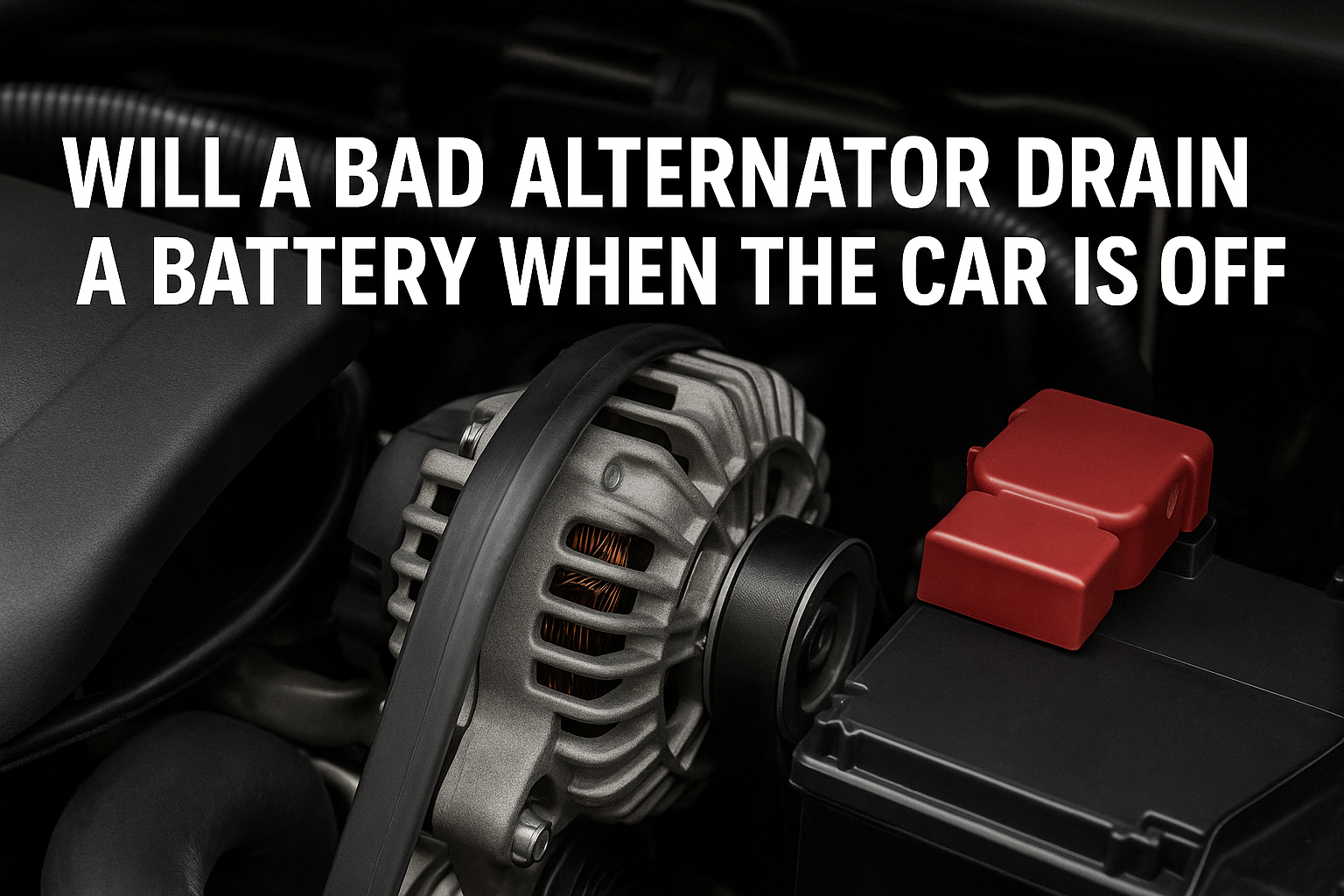Your car battery is supposed to stay charged when your vehicle is parked and turned off. But what if it keeps dying overnight? One potential culprit that many overlook is a bad alternator. But will a bad alternator really drain your battery when the car is off? The short answer is yes—but let’s explore why, how to diagnose it, and what to do next.
What Does the Alternator Do?
Before diving into the issue, it’s essential to understand the role of the alternator in your vehicle’s electrical system.
The alternator:
- Charges your car battery while the engine is running
- Powers electrical systems like headlights, the radio, and AC
- Converts mechanical energy into electrical energy
When functioning properly, it keeps your battery at full capacity while the engine is on and allows your vehicle to run without draining the battery excessively.
Can a Bad Alternator Drain a Battery When the Car Is Off?
Yes, a bad alternator can drain your battery even when the engine is turned off. This happens if:
- The alternator's diodes are faulty and allow current to leak in reverse
- The voltage regulator inside the alternator fails, causing inconsistent current flow
- Electrical systems tied to the alternator stay partially active due to malfunction
These issues create what’s known as a parasitic drain—a slow and steady loss of battery power when your car is off.
Signs Your Alternator Is Draining the Battery
Here are common symptoms that your alternator could be the source of the problem:
- Dead battery after sitting overnight
- Dim or flickering headlights
- Burning rubber or electrical smell under the hood
- Dashboard battery warning light
- Slow engine crank or no start
- Repeated jump starts
If you’re experiencing one or more of these, your alternator may be draining your battery even when the car is off.
Understanding Parasitic Drain
Parasitic drain refers to any electrical component drawing power from the battery when it shouldn't—especially when the vehicle is off. Some drain is normal (clocks, security systems, remote key receivers), but excessive drain points to a problem.
Alternators with internal short circuits, bad diodes, or worn-out wiring can cause this kind of abnormal battery drain.
How to Diagnose Battery Drain
If your battery keeps dying, it’s important to isolate whether the alternator is to blame. Here's how to approach the diagnosis:
Step 1: Check the Battery
Use a multimeter to check battery voltage:
- A healthy, fully charged battery should read 12.6V or higher when the car is off.
- If it drops below 12.2V, it’s partially discharged.
- Under 12.0V, it may be deeply discharged or damaged.
Step 2: Check for Parasitic Draw
- Disconnect the negative battery cable.
- Connect a multimeter (set to amps) in series between the cable and battery terminal.
- A normal draw is under 50 milliamps (0.05A).
- If you’re seeing a higher draw, start pulling fuses one by one to find the source. If removing a fuse tied to the alternator reduces the draw, that’s your problem.
Step 3: Test the Alternator
You can test alternator output using a multimeter while the engine is running:
- Voltage should read between 13.7V and 14.7V.
- If it's below that or fluctuating heavily, the alternator may not be charging the battery properly.
You can also test the diodes in the alternator with a diode tester or a specialized alternator tester.
Bonus Tool: Try Our Free Battery Drain Calculator
Not sure how long your battery will last with a parasitic draw? Try our Battery Drain Calculator to estimate battery life based on current draw, battery capacity, and more.
What Causes an Alternator to Go Bad?
Alternators are generally durable, but they can wear out over time. Common causes include:
- Heat damage to internal components
- Oil or water intrusion leading to corrosion
- Overloaded electrical systems from aftermarket lights, stereos, etc.
- Worn-out bearings or brushes
If your vehicle has high mileage or has been exposed to tough conditions, your alternator might be overdue for replacement.
How to Prevent Battery Drain from a Bad Alternator
Here’s how to keep your battery safe:
1. Test Your Alternator Annually
Make it part of your regular maintenance routine to test your alternator output and battery health.
2. Address Electrical Issues Quickly
Flickering lights or warning indicators shouldn’t be ignored. Catching issues early can save you from bigger repairs later.
3. Be Careful with Aftermarket Mods
While LED lights, sound systems, and other accessories are great upgrades, make sure they’re installed with the right relays, fuses, and wiring to avoid overloading your alternator.
4. Unplug Accessories When Parked
If you suspect a parasitic draw, unplug any accessories or devices before leaving your car for an extended period.
When to Replace Your Alternator
If your alternator is:
- Over 7 years old
- Showing signs of diode failure
- Failing to maintain 13.7–14.7V output
- Frequently causing dead batteries
…it’s time to replace it. Waiting too long can lead to repeated battery replacements or even leave you stranded.
You can either purchase a new or remanufactured alternator or visit a mechanic to have it tested and replaced.
Final Thoughts
A bad alternator can absolutely drain your battery even when your car is turned off, thanks to internal diode or regulator failures causing a parasitic power loss. If you're dealing with unexplained battery issues, don’t overlook the alternator as a potential cause.
Use a multimeter to check your alternator, monitor for parasitic drain, and take advantage of tools like our Battery Drain Calculator to stay ahead of electrical problems.
Stay Bright with Ultra Bright Lightz
If you're adding aftermarket lighting or equipment to your vehicle, trust Ultra Bright Lightz for high-quality, low-draw LED lights designed not to overload your system. Explore our wide selection of emergency vehicle lights, rock lights, and accessories to upgrade safely.


